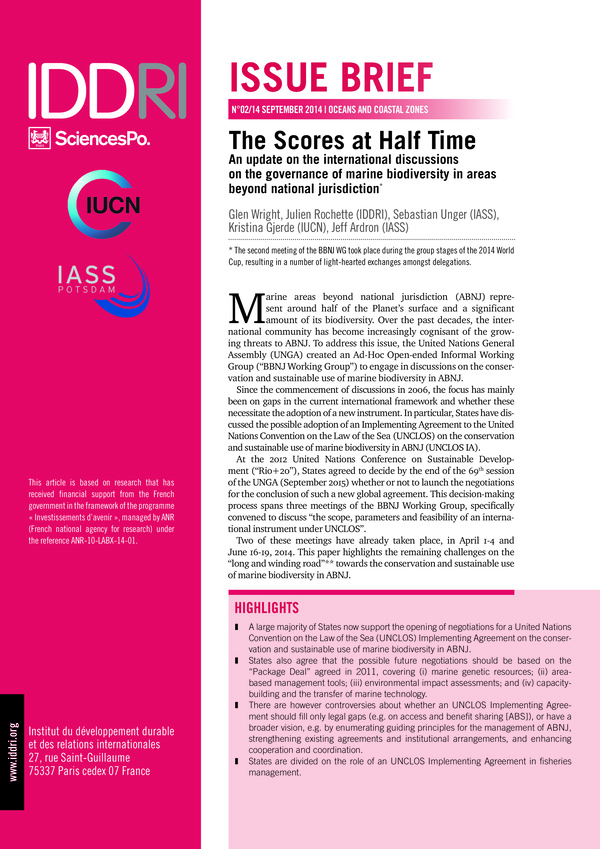The Scores at Half Time: An update on the international discussions on the governance of marine biodiversity in areas beyond national jurisdiction
Marine areas beyond national jurisdiction (ABNJ) represent around half of the Planet’s surface and a significant amount of its biodiversity. Over the past decades, the international community has beco...

Abstract
Marine areas beyond national jurisdiction (ABNJ) represent around half of the Planet’s surface and a significant amount of its biodiversity. Over the past decades, the international community has become increasingly cognisant of the growing threats to ABNJ. To address this issue, the United Nations General Assembly (UNGA) created an Ad-Hoc Open-ended Informal Working Group (“BBNJ Working Group”) to engage in discussions on the conservation and sustainable use of marine biodiversity in ABNJ. Since the commencement of discussions in 2006, the focus has mainly been on gaps in the current international framework and whether these necessitate the adoption of a new instrument. In particular, States have discussed the possible adoption of an Implementing Agreement to the United Nations Convention on the Law of the Sea (UNCLOS) on the conservation and sustainable use of marine biodiversity in ABNJ (UNCLOS IA). At the 2012 United Nations Conference on Sustainable Development (“Rio+20”), States agreed to decide by the end of the 69th session of the UNGA (September 2015) whether or not to launch the negotiations for the conclusion of such a new global agreement. This decision-making process spans three meetings of the BBNJ Working Group, specifically convened to discuss “the scope, parameters and feasibility of an international instrument under UNCLOS”. Two of these meetings have already taken place, in April 1-4 and June 16-19, 2014. This paper highlights the remaining challenges on the “long and winding road” towards the conservation and sustainable use of marine biodiversity in ABNJ.
Publication Details
Authors: Glen Wright, Julien Rochette, Sebastian Unger, Kristina Gjerde, Jeff Ardron
Venue: IDDRI Year: 2014 Pages: 4 Institution: IDDRI
Links and Resources
Notes
Issue: september